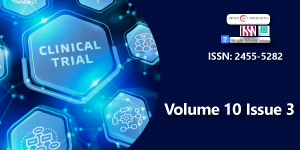Neuromuscular diseases in intensive care
Main Article Content
Abstract
Guillain-Barre syndrome and myasthenia gravis are common in the Intensive Care Unit (ICU) and are not always easy to diagnose in the emergency department. The short-term risk is the occurrence of respiratory muscle paralysis, which must be monitored by repeated measurement of vital capacity, and the existence of respiratory impairment requires transfer to intensive care. Apart from specific therapeutic options (plasma exchange, intravenous immunoglobulins and anticholinesterase agents), management is mainly symptomatic. Our work is a retrospective study, concerning 23 cases of neuromuscular diseases in the ICU from a period from 2018 to 2022. The various epidemiological, clinical, paraclinical, therapeutic, and evolutionary data were collected from the files of the Intensive Care Department A1 of the Hassan II University Hospital of Fez for the study. Osteomas of the paranasal sinuses are benign, often asymptomatic, tumors that progress very slowly. Endocranial development of an osteoma can breach the dura mata, allowing air to enter the cranium producing pneumocephalia which leads to severe neurological deficiencies. Pneumocephalia is an exceptional complication of osteoma.
Downloads
Article Details
Copyright (c) 2023 Lahrichi Y, et al.

This work is licensed under a Creative Commons Attribution 4.0 International License.
Abgrall G. Epidemiology of intensive care neuromyopathy in Fort-de-France: incidence, facilitating factors and external validation of a predictive score: the NERVIF study. Human Medicine and Pathology. 2015.
Garric JR. Guillain-Barré and Strohl syndrome in intensive care. Life Sciences. 2014.
Svahn J, Chenevier F, Bouhour F, Vial C. Myasthenias and myasthenic syndromes. EMC Neurologie. 2018.
Benchekroun EM. Myasthenia gravis: Experience of the neurology department of the Moulay Ismaël military hospital in Meknes. Med Thesis: Sidi Mohammed Ben Abdellah University. 2016.
Ritzenthaler T, Sharshar T, Orlikowski D. Guillain-Barré syndrome. EMC - Anesthesia-Reanimation. 2014; 11.
Balili K. Management of Guillain-Barré syndrome: comparison between Intravenous Immunoglobulins and Plasmapheresis. These FMPM. 2020.
Grapperon A, Attarian S. Guillain-Barré syndrome. EMC - Neurol. 2016.
Bouche P, Léger JM, Vallat JM. Peripheral neuropathies. Polyneuropathies and multiple mononeuropathies. Rueil-Malmaison. Doin. 2004; 2.
Doets AY, Verboon C, van den Berg B, Harbo T, Cornblath DR, Willison HJ, Islam Z, Attarian S, Barroso FA, Bateman K, Benedetti L, van den Bergh P, Casasnovas C, Cavaletti G, Chavada G, Claeys KG, Dardiotis E, Davidson A, van Doorn PA, Feasby TE, Galassi G, Gorson KC, Hartung HP, Hsieh ST, Hughes RAC, Illa I, Islam B, Kusunoki S, Kuwabara S, Lehmann HC, Miller JAL, Mohammad QD, Monges S, Nobile Orazio E, Pardo J, Pereon Y, Rinaldi S, Querol L, Reddel SW, Reisin RC, Shahrizaila N, Sindrup SH, Waqar W, Jacobs BC; IGOS Consortium. Regional variation of Guillain-Barré syndrome. Brain. 2018 Oct 1;141(10):2866-2877. doi: 10.1093/brain/awy232. PMID: 30247567.

